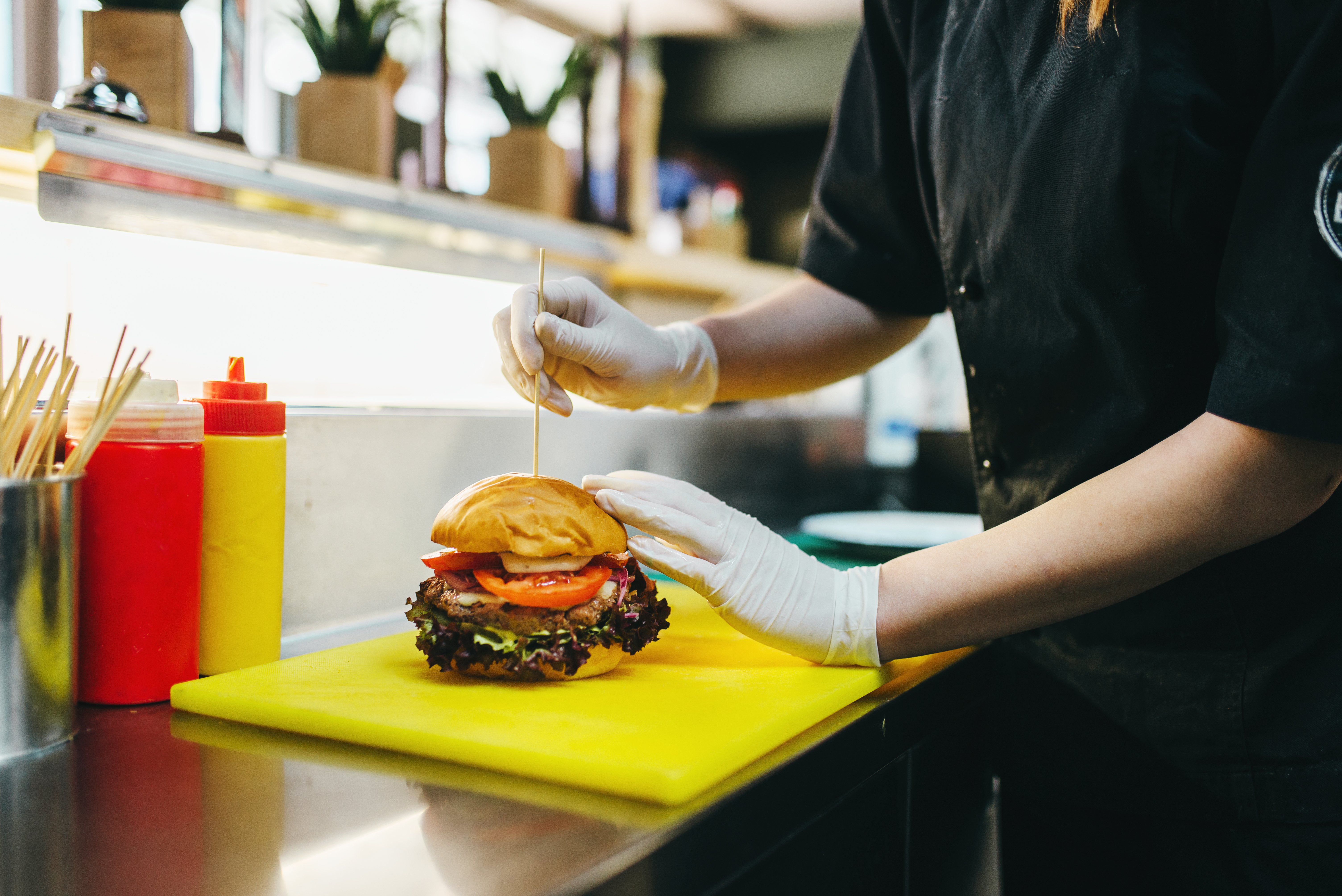
33 Restaurant Industry Statistics and Trends in 2022

The restaurant industry is constantly changing. In the last few years, we’ve seen a spike in online ordering and mobile app usage, automation software, and handheld POS systems for staff placing orders and guests making contactless payments.
2022 has been an interesting few months between inflationary pressures, labor shortages, and supply chain shortages. Now, halfway through the year what will we see for the remaining six months?
Lasting Restaurant Industry Trends in 2022
Covid-19 setback restaurant owners due to lockdown restrictions and other regulations imposed during the height of the pandemic. However, the most effective and positive trend from this setback is how restaurants of all sizes embraced technology. Restaurant mobile apps and online ordering have existed for a few years before but the pandemic accelerated the adaptability of this restaurant technology. The technology has evolved to include customizable loyalty programs, analytics/CDP, a full marketing suite for campaigns, and more. Because of this growth by the end of 2022, the restaurant industry expects to reach $898 billion in sales.
More trends that are expected to continue throughout 2022 include:
- Supply delays or shortages of key food or beverage items
- The foodservice industry workforce is projected to grow by 400,000 jobs, for total industry employment of 14.9M by the end of the year
- Food, labor, and occupancy costs are expected to remain elevated and continue to impact restaurant profit margins
We've compiled a list of 33 restaurant industry statistics and trends from reports, studies, and articles across the internet that cover the restaurant industry for the rest of 2022!
Restaurant Mobile App Statistics
These statistics highlight the trend of restaurant apps post-pandemic and prove this way of ordering is here to stay.
-
Nearly 6 out of 10 consumers have downloaded at least one new restaurant app in the last three months. (Source)
-
37% of diners are placing more mobile orders on restaurant apps than they were three months ago. (Source)
-
1 out of 2 consumers is most frustrated with orders not being ready upon arrival. (Source)
-
52% of consumers are motivated to download restaurant apps because of easy ordering followed by earning and tracking loyalty points (49%), deals and coupons (48%), bypassing long lines (47%), and ease to pay (42%). (Source)
-
59% of consumers keep restaurant apps on mobile because it’s fast and easy to use, followed by 48% saying the menu is easy to access. (Source)
-
Nearly 1 in 2 consumers say they will delete restaurant apps if their order is cold upon arrival. (Source)
-
About 92% of top-performing restaurants offered mobile order-ahead and loyalty rewards programs or a combination of both. (Source)
-
The number of online food orders in fast-food and casual dining restaurants is 50% larger than non-digital orders. (Source)
-
Guests spend 50% more on average when they place orders online. (Source)
-
Nearly 35% of consumers agree that it’s easier to customize their order on a restaurant’s site or mobile app. (Source)
-
In 2022, the number of Americans using apps to order food and other groceries is expected to rise from 27.9 million to 30.4 million. (Source)
Restaurant Gift Card Statistics
These statistics polled over 1,000 U.S. consumers aged 18 and older to cover the impact of inflation and better understand industry trends.
-
51% of consumers say that their gift card usage has not been impacted by inflation or the pandemic. (Source)
-
37% of consumers say they have already taken advantage of a gift card promotion this year, and 58% say that gift card promotions will motivate them to buy more gift cards during this inflation period. (Source)
-
37% of consumers are motivated by a bonus amount added to the gift card. (Source)
-
58% say promotions would prompt consumers to purchase gift cards, despite inflation. (Source)
-
22% would choose a promotion that offers a dollar amount discount on a gift card purchase. (Source)
Restaurant Software Statistics
These restaurant software statistics highlight the adoption of digitalization and the increase in embracing restaurant technology.
- 71% of food businesses believe that digital transformation is a crucial factor for business agility. (Source)
- 90% of restaurants think increased automation would help their staff concentrate more on important tasks. (Source)
- About two out of three restaurant owners believe that automation would fill gaps in online order management. (Source)
- 78% of restaurants say that the use of digital menus leads to significant benefits. (Source)
- In the US, the number of QR code payment users would likely increase by 240% from 2020 to 2025. (Source)
- Over 80% of restaurants are turning to technology - like online ordering, reservation and inventory apps, and restaurant analytics - to help them run their business successfully and efficiently. (Source)
Restaurant Loyalty Statistics
Customer loyalty programs track the spending of repeat customers and then reward that loyalty with points or punches (depending on the loyalty program) that can be exchanged or redeemed for rewards. Here are some top statistics for restaurant loyalty programs that restaurant owners should be aware of.
- Customers are 80% more likely to shop at stores with loyalty programs and spend 33% to 10x more over time. (Source)
- 60% of loyal customers will purchase more frequently from their preferred brands. (Source)
- 69% of guests stated that loyalty programs incentivize them to revisit more frequently. (Source)
- Restaurant customers who belong to loyalty programs spend twice as much as those who do not. (Source)
- 60% of consumers want promotions and discounts. (Source)
Restaurant Online Ordering and Delivery Statistics
Restaurant food delivery rapidly increased during the pandemic. As people hunkered down in their homes, the only avenue of enjoying a night out was ordering from a restaurant for a night in. These statistics show how food delivery increased and changed the state of the restaurant industry.
- Most online orders, about 60%, are made on smartphones. For that reason, it’s important to ensure your restaurant’s website and online ordering system are optimized for small screens! (Source)
- The number of food app delivery users in the US increased from 36.4 million in 2019 to 44.1 million in 2021. It is projected to reach 53.9 million by 2023. (Source)
- 68% of consumers prefer to place delivery orders from a food establishment’s website. (Source)
- Fifty-four percent of adults say purchasing takeout or delivery food is essential to the way they live, including 72% of millennials and 66% of Gen Z adults. (Source)
- Over 185 million people are expected to use online food delivery services by 2025. (Source)
- Revenue in food delivery is projected to reach $66.56bn in the U.S. in 2022. (Source)
Related bites

How To Keep Up With Trends in The Restaurant Industry
The restaurant industry is constantly evolving, and your restaurant should be too! These tips will help you keep up with the latest trends in the restaurant industry.

The Impact on the Industry: Artificial Intelligence in Restaurants
Is artificial intelligence the change we needed to see in the restaurant industry? Learn how it’s impacting restaurant revenue and helping retain your best guests!

Restaurant Customer Psychology
Understanding customer psychology is crucial in the restaurant industry. From ambiance and menu design to pricing strategies and sensory marketing, leveraging customer psychology can enhance the dining experience and build brand loyalty. Discover the key factors that influence customer behavior in the restaurant industry.


Comments